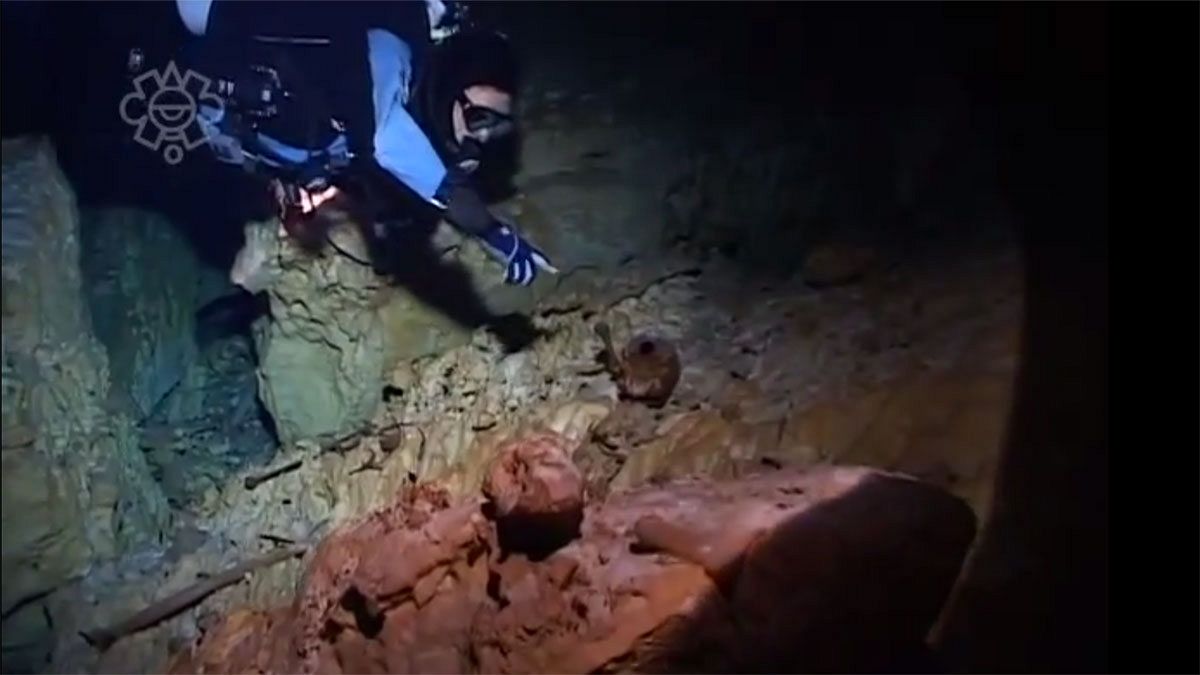The discovery of a 12,000-year-old skeleton has helped clear up a problem that has long puzzled scientists – the origins of the first Americans.
Differences between the skeletons of the earliest and modern native Americans have led researchers to suggest the older humans had their roots in Europe, Asia or Australia.
But now a study published in Science has found the earliest Americans could have come from the same place as native Americans – Beringia, an area around the Bering Strait that connected Asia and North America in ancient times – despite the differences in appearances.
Divers chanced upon the skeleton – that of small teenage girl who is thought to have fallen to her death in an underground cave system in Mexico 12,000 years ago – in 2007:
“The Hoyo Negro girl was related to living Native Americans and has ancestry from the same Beringian population,” says Deborah Bolnick, assistant professor of anthropology at The University of Texas at Austin. “This study therefore provides no support for the hypothesis that Paleoamericans migrated from Southeast Asia, Australia or Europe. Instead, it shows that Paleoamericans could have come from Beringia, like contemporary Native Americans, even though they exhibit some distinctive skull and facial features. The physical differences between Paleoamericans and Native Americans today are more likely due to changes that occurred in Beringia and the Americas over the last 9,000 years.”


